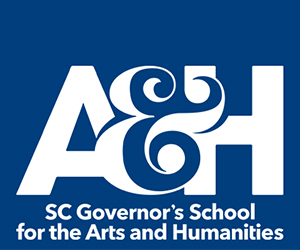Catch-up Time
June 7, 2013By Temple Ligon
June 7, 2013
When I ran for Mayor of Columbia in 1990, my #1 issue on the campaign trail was Columbia’s bus system. I had done my homework, and I had concluded we had one of the worst bus systems in the country. Then I proceeded to prove it.
Winning only five percent of the vote, I couldn’t claim a mandate on the needs for improved public transit in Columbia. But I could at least illustrate my point.
I visited the American Public Transit Association (APTA) in Washington, where they let me into their library. I was overwhelmed with numbers: numbers of vehicles, numbers of passenger miles, numbers of rural and urbanized-area populations, etc. And so it went until I discovered a means to numerically compare Columbia’s bus service with other cities’ bus services across the country, all in an apples and apples style.
For funding, the federal government separated the country between urbanized and rural areas. Urbanized areas had to claim at least 50,000 in population to gain the urbanized status and the urbanized funding formula so favorable. In transit circles another way of saying urbanized area population (UZA) is service area population.
Based on the 1990 census, Columbia’s UZA was 328,349. Austin, Texas, had a UZA of 562,008. At eight o’clock in the morning, what bus system managers called a.m. peak demand time, Columbia put 34 buses on the street, while Austin’s bus system had 343 buses operating at the same time.
To compare Austin and Columbia, I counted the number of buses on the street in the morning per 100,000 UZA. Austin had 61 buses per 100,000 UZA and Columbia had 10. Without getting too creative, I had determined the Austin bus system was six times the size of Columbia’s on a per capita basis.
At the time Austin was a couple hundred thousand more people than Columbia, and maybe bigger cities were expected to have better bus service. Somewhat smaller than Columbia but still a capital city and still home to the state’s flagship university, Madison, Wisconsin’s 244,336 people put 148 buses on the street for the morning rush hour. Madison could cite its 60 buses per 100,000 UZA as another city with six times Columbia’s bus service.
That was in the early 1990s, and today, more than 20 years later, just about every city’s bus system in the country has grown significantly. After all, so has the population and the population’s affection for public transit. The Columbia UZA has grown from 328,349 in 1990 to today’s estimated 549,777, a 67% gain.
How ’bout the bus service?
At the morning rush hour in Columbia, there are fewer buses than the 34 we had rolling in 1990. To be fair, the number of vehicles – vans as well as buses – comes to 41, according to what Central Midlands Regional Transit recently reported to the federal government.
For the same publication, Austin reported its 795 vehicles on the street at a.m. peak demand time. But back in South Carolina, the capital city Columbia and its 41 vehicles should stand next to Charleston, which runs 102 vehicles in the morning.
In North Carolina the Research Triangle Park has its own public transit with 135 vehicles in the morning, and that is augmented in Durham with 77 vehicles, in Chapel Hill with 89 vehicles, and Raleigh reports another 247 vehicles on the street in the morning rush hour for a Research Triangle Park total of 548.
Don’t forget: Columbia advertises its 41 vehicles as its high tech growth area connector, and three hours north, RTP runs 548 vehicles among its growing high tech enterprises.
There appears to be a parallel between good public transit and good economic growth. Say this one more time: Columbia runs 41 vehicles and the RTP, 548.
Charlotte, by the way, runs 425 vehicles every morning among its 1,249,442 UZA. Put another way, Charlotte has a little over twice the people in its transit service area, and Charlotte moves them around with more than 10 times the transit vehicles.
It’s catch-up time, Columbia. It’s been catch-up time for more than 20 years.
Sign up here to receive MidlandsLife weekly email magazine.













